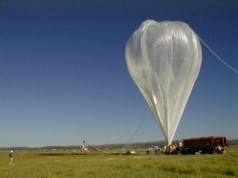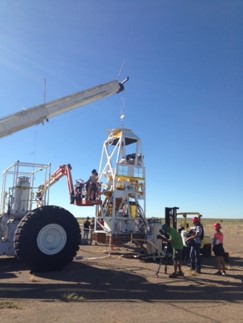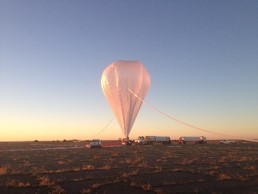National Aeronautics and Space Administration
Goddard Space Flight Center
Search:

Balloon Program Office
Operations
Missions



What are scientific balloons?
Standard NASA scientific balloons are constructed of polyethylene film only 0.002 centimeters (0.0008 inches) thick, about the same as an ordinary sandwich wrap. The film is cut into banana-peel-shaped sections called gores and heat-sealed together. These standard (“zero-pressure”) balloons are open to the atmosphere at the bottom to equalize the internal pressure with the surroundings. Helium serves as the buoyancy gas.
What is part of the balloon system?
The balloon system includes the balloon, the parachute, and a payload that holds instruments to conduct scientific measurements.
How much weight can it carry and for how long?
Payloads weighing as much as 3,600 kilograms (8,000 pounds) and flying up to 42 kilometers (26 miles) high can be accommodated. Duration aloft is dependent upon locations of launch and termination and stratospheric meteorological conditions.
Missions may be categorized in several ways, one of which is by order of increasing duration:
- Hand Launches: These are simplified missions using smaller balloons without a gondola, generally short durations of a few hours.
- Conventional Ballooning: Conventional missions typically use direct line-of-sight electronics for command and data, with flight durations ranging from a few hours to days.
- Long Duration Ballooning: A Long Duration Balloon (LDB) mission typically traverses between continents or around the world for one circumnavigation. LDB flights may last up to three weeks, and satellite-based electronic systems are utilized for command and data.
- Ultra-Long Duration Ballooning (ULDB): The super pressure pumpkin-shaped balloon has been designed to increase flight durations up to one hundred days. This new balloon will significantly increase the amount of data that can be collected in one balloon mission.
NASA Code 820
Scientific Balloon Update
Report back for the latest update from NASA's Balloon Program Office.
- NASA Official: Debora Fairbrother
- Point of Contact: Valerie Brizak
